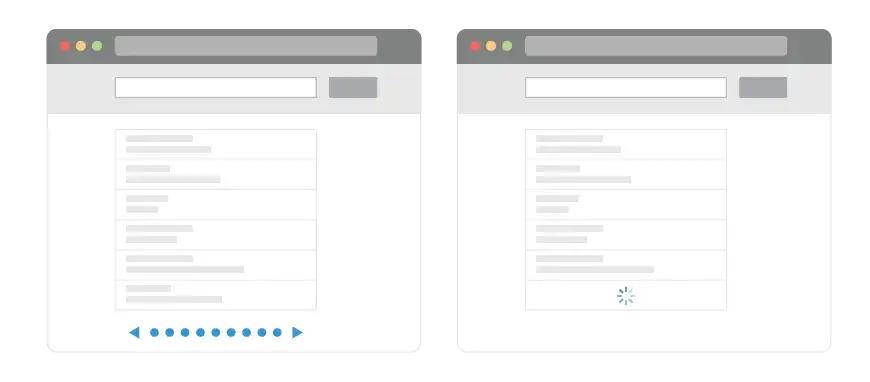Google’s Continuous Scroll: How long is page 1, really?
Google announced in late 2022 that they would be rolling out a “continuous scrolling experience” for English language desktop searches performed in the United States. (Mobile users will note that they have been seeing results like this since late 2021.) This means that when you search on Google and reach the bottom of page 1, instead of clicking to go to page 2 of search, Google automatically adds the next page of results to the bottom of the current page. The new user experience is more like Facebook – as you scroll, you get more choices for engagement.
Obviously, this challenges the old reputation management wisdom that a client’s primary concern should be mostly about page 1, with subsequent pages being less relevant. How should we be defining “page 1” now?
As it turns out, there are several reasons not to worry, and some best practices that emerge from this change.
Firstly, Google’s algorithm and its set of features are constantly changing, and many features like this have been rolled back in the past. Features on Google are somewhat fluid, so watchful / prepared is much better than panicked.
Secondly, the core search algorithm has not changed, and we therefore do not anticipate a sudden drop in page 1 satisfaction and an increase in demand for a second page of results, no matter how the next set of search results is loaded. Unlike social media platforms like Facebook and TikTok which endeavor to keep you engaged with them for longer periods, Google’s stated focus has always been on satisfying user’s communicated search intent quickly – minimizing your time on their site, and guaranteeing you come back habitually. This is part of Google’s DNA and is unlikely to change.
And in fact, industry clicking and eye tracking studies since the mobile roll out have consistently shown that the first 10 or so results still satisfy over 90% of searchers.
Here’s the “But”…
That said, more accessible and efficient transitions typically lead to those transitions being utilized more frequently by users. The larger screens on desktop devices could also increase the number of search results seen when the next page loads. We therefore anticipate a small but noticeable increase in desktop impressions and clicks for page 2 search results.
That means that Page 2 matters a bit more. Field data we saw following the mobile continuous scrolling launch suggested that this change made page 2 results more easily accessible for users, and impressions (eyeballs) on page 2 mobile results increased by around 10%, although the impact on clicks to these results was less noticeable.
Bottom line: brands and individuals should continue to prioritize ownership and control of their online narrative as reflected by the quality of their page 1 Google Search results. Ensuring that this first set of results fully addresses and satisfies searchers’ varied intents is the best way to obviate the need for searchers to continue scrolling past page 1.
For those with prominent unfavorable content in page 2 search results, we recommend dedicating more time and resources into expanding their ownership and control over page 2 moving forward, because these results may now be seen more frequently by searchers.

